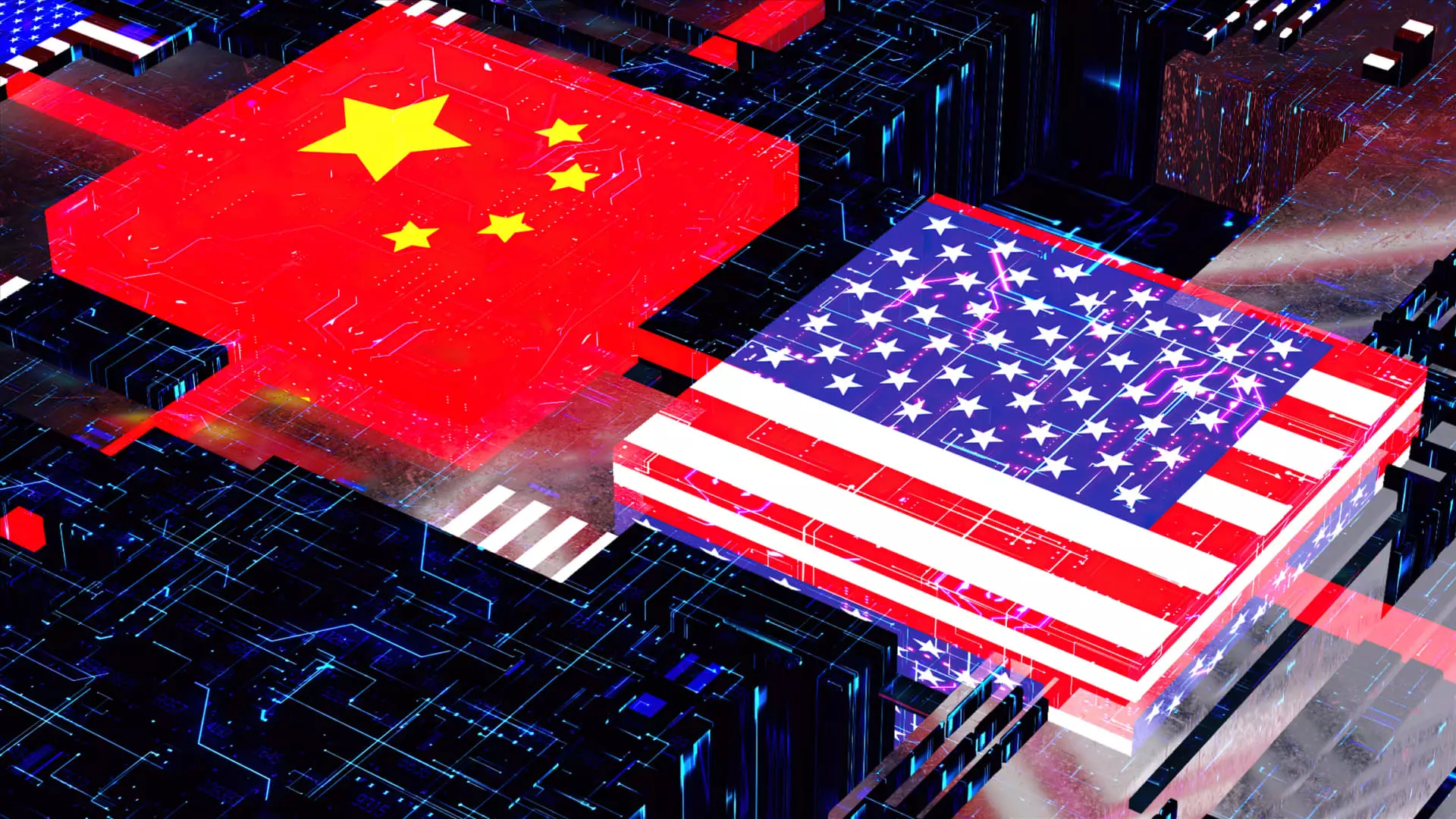The current landscape of the semiconductor industry could be likened to navigating through an impenetrable fog. Leading firms in this critical sector are grappling with an escalating barrage of uncertainties stemming from fluctuating U.S. tariff policies and tightening export restrictions directed at China. The fragile state of these regulations has rendered the entire sector precariously balanced, inviting skepticism while placing immense pressure on executives tasked with steering their companies through these tumultuous waters.
Under the shadow of both the Trump and Biden administrations, the semiconductor industry faces a multifaceted challenge. Since President Trump’s administration introduced “reciprocal” tariffs—often described as a “knee-jerk” response to trade imbalances—the ripple effects have been far-reaching yet confusing. Although many tariffs were suspended temporarily, the U.S. government’s subsequent attempts to add semiconductor technologies to restricted export lists exacerbate the challenges. Companies like AMD now anticipate a staggering $1.5 billion revenue hit by the end of the fiscal year due to AI chip export restrictions to China, illustrating the dire ramifications of these policies.
Executive Anxiety and Market Responses
In an environment rife with uncertainty, the reactions from industry leaders have been telling. AMD’s financial forecasts serve as an alarming bell warning of impending challenges. Their quarterly earnings may have exceeded some expectations, but the weight of anticipated losses looms large, casting a pall over future growth prospects. Super Micro’s reluctance to issue guidance for fiscal 2026 underscores just how alarming the economic landscape has become. As their stock stumbled with a premarket decline of 4%, it was a clear signal to shareholders that volatility is the new norm.
This anxiety isn’t confined to American companies either; industry titan Samsung has lamented “demand volatility,” attributing its unpredictability to evolving geopolitical tensions and U.S. tariff policies. Samsung’s stark acknowledgment of the difficulties in forecasting relational impacts speaks volumes about an industry in flux. The irrefutable truth is that the semiconductor sector, a vital force driving technological advancement, is caught in a web of complex geopolitical dynamics that challenge even the most seasoned professionals.
Investment Uncertainty and Strategic Postponements
One of the more troubling manifestations of this climate is seen in Marvell’s decision to delay its investor day, a critical event intended for transparency and investor engagement. CEO Matt Murphy’s statement on macroeconomic turbulence captures the industry’s unsettling reality: clarity is in short supply. The postponement, accompanied by a notable 4.4% drop in shares, signals not just caution but a growing exasperation with uncertainty—a sentiment resonating within the broader semiconductor ecosystem.
The decline of the VanEck Semiconductor ETF, plunging nearly 12% in 2023, paints a bleak picture of investor sentiment. The hesitations displayed by prominent firms can hardly be overlooked. Companies, traditionally confident in their projections, are now choosing to adopt a “wait-and-see” approach, a phrase that elicits both frustration and incredulity from observers. The worry is palpable: how long can they successfully navigate this tempest of uncertainty before it impacts their competitiveness vis-à-vis international counterparts?
The Geopolitical Chess Game
The ongoing tussle between the U.S. and China adds yet another layer of complexity. Companies like Nvidia, despite their commendable advancements, are acutely aware that their ability to flourish hinges on navigating the labyrinth of U.S. regulatory bureaucracy. Nvidia CEO Jensen Huang raises a valid alarm: the burgeoning artificial intelligence market is expected to burgeon into a $50 billion behemoth in the next few years. To deny American companies access to it would be a strategic blunder, not just for the firms but for the entire U.S. economy.
Looking outward, the advancements of Chinese firms such as Alibaba and Huawei in AI technology signal a market that continues to evolve, regardless of the barriers erected. This burgeoning rivalry indicates that the U.S. must not become complacent; acknowledging global competition is crucial to sustaining its leadership in technology. Huang’s assertion that the U.S. should “put the pedal to the metal” perfectly encapsulates the imperative for proactive engagement rather than reactive posturing.
The Balancing Act of Technological Leadership
As American chipmakers strive to showcase their technological supremacy over Chinese counterparts, inherent challenges abound. There’s an escalating race, one fueled by political tensions and ambitions. Yet, this is not merely a clash of corporate giants; it possesses far-reaching implications for job creation and economic resurgence in the United States. With so at stake, it is crucial that U.S. policy not become an impediment to innovation.
Amidst this chaotic backdrop, it remains evident that the U.S. semiconductor industry is at a critical juncture—faced with myriad obstacles, but also incredible potential. Remembering that competition often drives progress, the ultimate challenge will be to harness these complexities and emerge not just unscathed, but stronger and more innovative. Ultimately, a recalibrated approach to international trade policy, combined with staunch investment in homegrown technology, could redefine not just the semiconductor landscape, but the global tech ecosystem as a whole.

